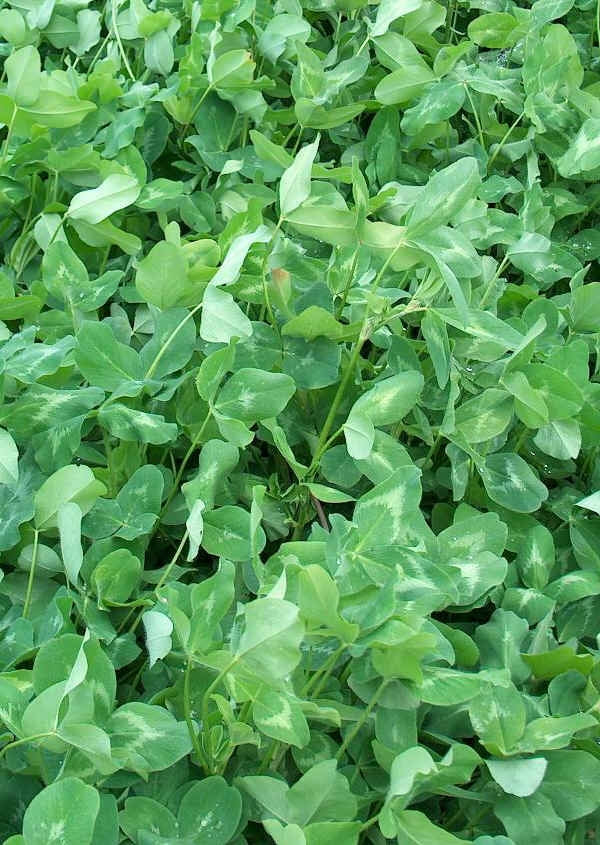ORGANIC CANDIED CLOVER
Have a question?

ORGANIC CANDIED CLOVER
Dettagli
The Pratense or violet clover has certainly been one of the most widespread fodder legumes in Europe for some time and in some countries of the old continent it reaches extensions of several hundred thousand hectares.
In Italy, however, the pure cultivation of this grass legume has gradually lost interest over the last twenty years.
Of not very ancient cultivation, the Prato clover probably arrived in Europe through Spain and, from there, spread to France, Germany and the Netherlands.
Already known as a fodder plant, the Prato clover was never extensively cultivated and only became a plant of primary importance when, introduced into England in the mid-1600s, it was included in the rotation to replace bare fallow. The consequences of this measure were twofold: on the one hand it caused a significant increase in fodder availability and, on the other, thanks to its nitrogen-fixing capacity and the consequent enrichment of the nitrogen content of the soil, it allowed an increase in all agricultural production.
Botanical characters
The root system of the Pratense clover is made up of a small, very branched taproot, so it is rather superficial. The stems are erect, branched, hollow, up to 0.8 m high. the leaves are trifoliate, with oval leaflets with entire margins, bearing a light green V-shaped band on their upper surface. The inflorescences are globose, with a flower head, composed of numerous (80-100) small, tubular flowers, of a more or less intense pink color, tending towards purple. Fertilization, exclusively crossed, is ensured by pollinating insects (bees, bumblebees).
The fruit is a small uni-seeded legume, the seeds are small (1000 weigh 1.6-1.8 g), almost pear-shaped (globose on one side, thinner on the opposite side), of a bright yellow color with shades of violet, very variable from seed to seed and from one part of the same seed to another.
The Pratense clover is a physiologically multiannual species, in practice, however, it behaves like a biennial species, as at the end of the 2nd year almost all the plants have died either due to drought or fungal attacks. Therefore the Pratense clover only lasts two years in cultivation in southern European countries, only in Northern Europe do the local varieties last 4-5 years.
Environmental needs and cultivation technique
The Pratense clover has a more northern distribution area than that of alfalfa, as it resists the cold better, but does not adapt to hot and dry climates due to its rather superficial root system.
As for the soil, it prefers medium-textured, fresh soil, which tolerates moist, very heavy, slightly calcareous, acidic soils well (pH 5-7.5, optimum 6-7), unsuitable for alfalfa.
Pratense clover is an excellent improving crop which, therefore, is suitable for following and preceding wheat or another similar cereal. It is impossible to grow Pratense clover on land that has hosted it only a short time before, therefore it is absolutely essential that the Pratense clover enters long rotations, i.e. in which a long period (at least 5 years) passes between two successive crops of this legume.
Given the brevity of the production cycle and the slowness of its development in the 1st year, there is no convenience in sowing the Pratense clover in specialized crops. In Italy the normal technique was sowing in the burr in the middle of a cereal, but with the intensive cultivation of wheat has little chance of survival of the legumes sown in it.
The most usual time for sowing is February-March, 30-35 kg/ha of seed is used for sowing.
Variety and use
In Prato clover, cross-fertilization is the absolute rule as the plants are totally self-incompatible.
In each region there were local populations (“ecotypes”) well adapted to particular environmental conditions. Today only selected varieties can be traded. Renowned Italian ecotypes were the Bolognino or Pescarese, the Spadone.
Production in the 1st year is very low, there is only inherent stubble which, at most, can be exploited with prudent grazing. Full, mowing production is achieved only in the 2nd and last year in which the lawn gives two excellent mowings, one in mid-May, the other at the end of June. Only in very favorable environments and years can there sometimes be a very modest third cut. .
Hay yields are 5-6 t/ha. Excellent purple clover hay cut at the beginning of flowering has a dry matter content of approximately 86%, crude proteins of 17-18% (on dry weight) and a nutritional value of 0.6-0.65 UF per kg of dry matter
The Pratense clover seed is produced on the 2nd cutting: the productions are low (100-200 kg/ha) and are made very random by several difficulties: scarcity of pollinating insects, attacks by insects (Apion pisi), lodging, ginning.


